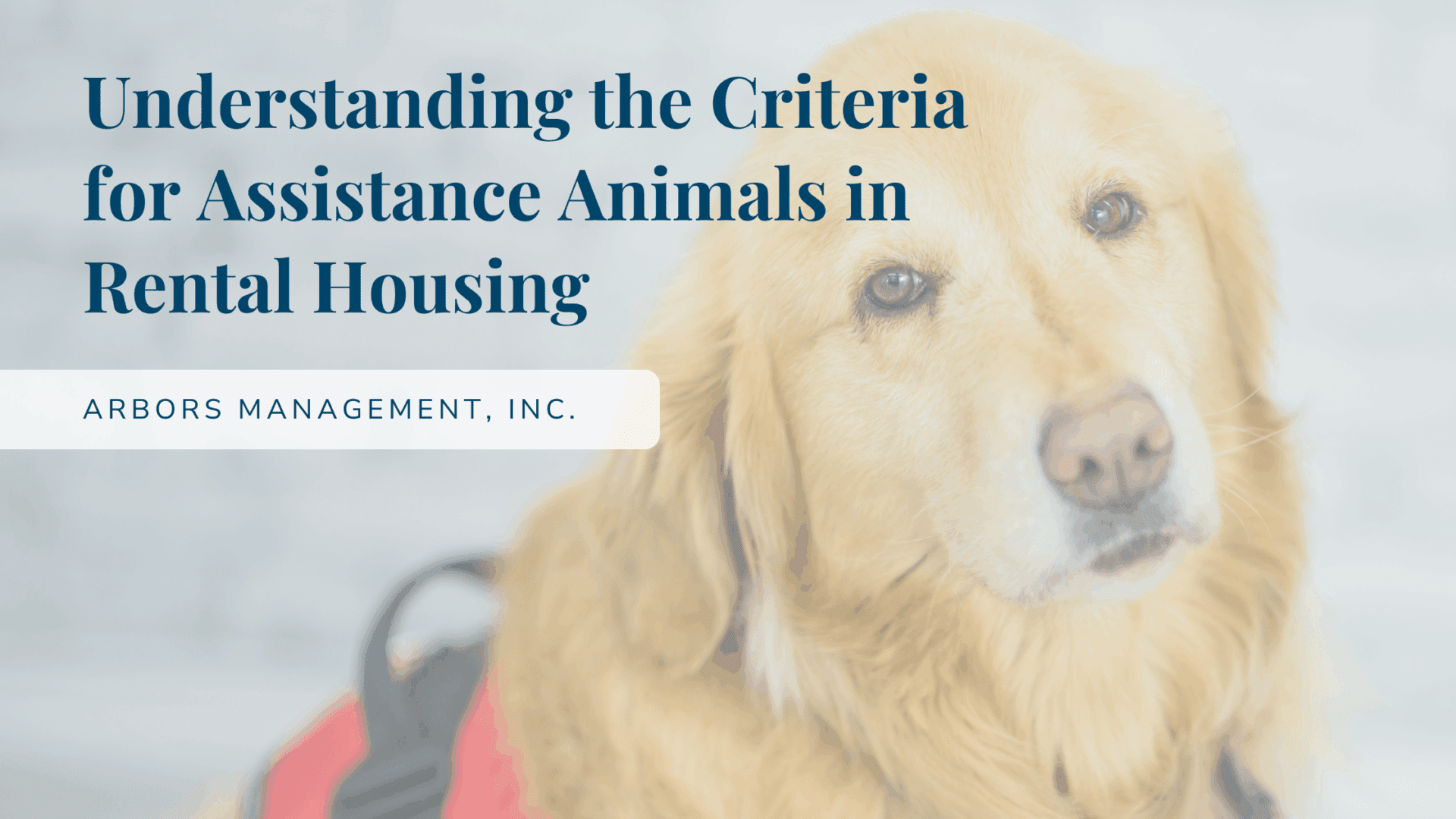
Understanding the Criteria for Assistance Animals in Rental Housing
Navigating the complexities of assistance animals in rental properties can be challenging for both landlords and tenants. The regulations are primarily dictated by federal laws, such as the Fair Housing Act (FHA), rather than individual landlord preferences or blanket “no pets” policies.
Here’s a concise overview of the essential criteria and requirements for allowing an assistance animal in a rental property.
-
Assistance Animal vs. Pet
The first key distinction is that an “assistance animal” is not classified as a pet. Instead, it is an animal that works, assists, or performs tasks for someone with a disability. It may also offer emotional support that alleviates symptoms or effects of that disability. Under the FHA, landlords are required to make reasonable accommodations for individuals with disabilities. This can include permitting assistance animals even in the presence of a “no pets” policy, unless it poses an undue burden or direct threat.
-
The Definition of Disability
According to the FHA, a person with a disability is defined as an individual with a physical or mental impairment that significantly limits one or more major life activities. The accommodation pertains to the individual’s disability, and the animal plays a crucial role in that accommodation.
-
The Two Main Types of Assistance Animals
There are two primary categories of assistance animals:
-
Service Animals
Service animals are typically dogs specifically trained to perform tasks directly related to a person’s physical, sensory, psychiatric, intellectual, or other mental disabilities. Examples include guide dogs for the visually impaired, hearing dogs, or dogs trained to detect seizures.
-
- Key Point: For service animals, landlords cannot inquire about the individual’s disability, require a demonstration of the animal’s training, or request documentation of the disability or training.
-
Emotional Support Animals (ESAs)
ESAs provide emotional or mental support that alleviates the symptoms of a disability, but they do not require specialized task-oriented training. The focus here is the therapeutic benefit the animal delivers to the individual’s well-being.
-
- Key Point: For ESAs, landlords can request reliable documentation confirming the individual’s disability (but not the specific disability itself) and the necessity of the animal, typically in the form of a letter from a qualified healthcare professional.
-
Documentation and Verification
Landlords may seek verification for an ESA if the disability is not immediately apparent. This documentation should:
- Be supplied by a healthcare professional (doctor, therapist, psychiatrist, social worker, etc.) treating the individual for their disability.
- Confirm that the individual has a disability as defined by the FHA.
- Indicate that the animal is necessary for support or tasks related to that disability.
- Important: The documentation does not need to specify the exact disability, just its presence and the need for the animal as part of the accommodation.
-
Reasonable Accommodations and Exceptions
Landlords must allow the animal unless specific conditions are met. They can deny a request for an assistance animal if it can be demonstrated that:
- The animal poses a direct threat to the health or safety of others that cannot be mitigated by other reasonable accommodations.
- Granting the request would create significant administrative or financial burdens (an “undue burden”).
- The animal would cause substantial physical damage to the property of others.
- Note: Allergies or a generalized fear of animals from other tenants are typically not sufficient grounds for denial under the FHA.
-
Tenant Responsibilities
While landlords are obligated to accommodate the animal, tenants remain responsible for:
- The animal’s behavior (e.g., preventing excessive noise or damage to common areas).
- Cleaning up after the animal (waste disposal).
- Any damage caused by the animal that exceeds normal wear and tear.
In summary, the criteria for assistance animals in rentals focus on a verified need associated with a disability. Not the animal’s training or classification as a “pet.” Understanding these federal guidelines promotes compliance and fair practices for all parties involved. Should you have further questions about this subject in relation to your investment properties, or if you prefer someone to handle this for you, we are here to help! Please reach out to us at 1-800-963-1280 or at contact@arbors.com.
